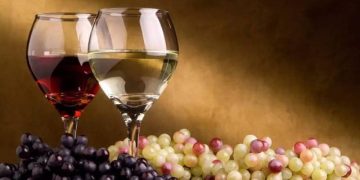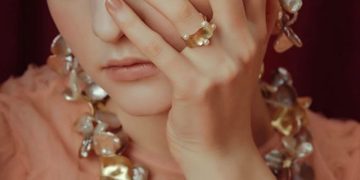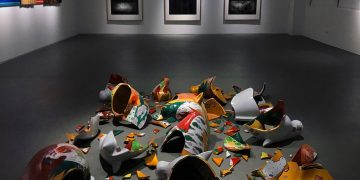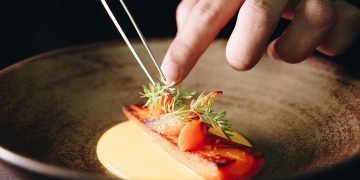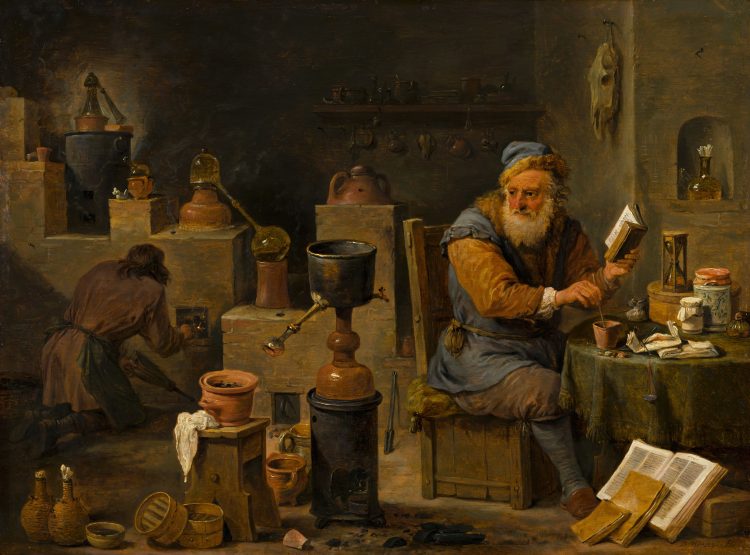“Alchemy is a pretty kind of game,/Somewhat like tricks o’ the cards, to cheat a man/With charming.” So insists the sceptical Surly in Ben Jonson’s comedy The Alchemist (1610). In the context of the play, he was absolutely correct – and in real life it would often have been the same.
In 16th- and 17th-century Europe, alchemical confidence tricksters pretended that they could transform base metals into gold and work other wonders such as finding the elixir of eternal life or the cure for all diseases. But there was more to alchemy than simple fraud. This much is suggested by Interior of a Laboratory with an Alchemist at Work and a Stuffed Alligator Hanging from a Ceiling Beam by David Teniers the Younger (1610- 1690), which is offered by Bonhams in the Old Master Paintings sale at New Bond Street in December, with proceeds going to the Eddleman Quantum Institute.
If anyone is being fooled here, it is the Alchemist himself, the grey-bearded man who stands to the right of the picture. It looks as though he has just applied the bellows he is holding to one of his athanors. These are furnaces (also known as ‘Slow Henrys’) designed to burn slowly at a constant heat for a long time.
Subtle, the con artist in Jonson’s play, has an athanor that he claims “three days since past” has been distilling “Sulphur of Nature”. There are no fewer than three in Teniers’s painting, two on the shelf in front of the Alchemist, and a larger apparatus on the floor. All of these are set up for distillation with tubes and retorts attached. But the Alchemist himself is gazing away from them, perhaps lost in thought.
This work by Teniers belongs to a popular genre that went back into the previous century. A celebrated early example is a drawing by Pieter Bruegel the Elder – who happened to be the grandfather of Teniers’s wife, so the subject was in a way a family heirloom. But Bruegel’s image, which was widely known through an engraved version by Philips Galle, had a subtly different message.
Bruegel’s alchemist is surrounded by squalid chaos. His workshop is ruinous, his assistants ragged and idiotic. In the centre, his unfortunate wife holds out an empty purse – and that is the message: pursuing fantasies such as the Philosopher’s Stone is a fast route to penury. To rub in the point, a woman is begging for alms outside the window.
In Teniers’s painting, as in the dozen or so others he produced on the same theme, the ingredients are similar. There are piles of vessels, dusty tomes, a huge fireplace, multiple athanors and a team of helpers. But this workshop is, if not exactly orderly, considerably less contents were not limited to fake mermaids and alleged unicorn horns. Worm’s bizarre accumulation of this and that, and similar arrays throughout Europe, were the ancestors of later museums of natural history, metallurgy and geology.
Renaissance alchemy was also an amalgam of magic with a genuine search for knowledge. In the mid-17th century, its reputation was ambivalent. Some exponents were, or were suspected to be, charlatans; others were sincere but deluded; but at least a few were (at least part of the time) pioneering scientists.
Teniers’s younger contemporary Isaac Newton famously spent more time on alchemy than he did on the laws of motion and universal gravitation. Jan Baptist van Helmont (1580-1644), who was closer to the painter in time and place (both lived in Antwerp and Brussels), did important work on the nature of gas (a word he invented) and approached a modern understanding of enzymes.
On the other hand, he experienced frequent visions and attributed his choice of medicine as a career to a conversation with the Archangel Raphael.
Alchemy was an ancient pursuit, with roots in ancient Greece and Egypt, which had been developed in the Islamic world before travelling to medieval Europe where it had become, by the Renaissance, that strange amalgam of mysticism, mumbo-jumbo and science. Similarly, the treatment of the subject in art changed through time. To Bruegel, alchemy was a subdivision of the traditional theme of folly. This was Jonson’s view, too, though in his play the fools are those taken in by the trickster and his accomplices, and by their hilariously fraudulent patter. Surly gives a comic thesaurus of preposterous alchemical jargon: “…your elixir, your lac virginis,/Your stone, your med’cine, and your chrysosperm…” And so on.
On the other hand, Johannes Vermeer – a Netherlandish artist some two decades younger than Teniers – painted similar figures to the traditional alchemist but took them seriously. The works known as The Geographer and The Astronomer contain some of the same components as Flemish depictions of alchemist’s workshops: the pile of learned books, the globe (which appears in Teniers’s version of the subject in Braunschweig), the abstracted gaze of the main figure. These, however, seem to be genuinely learned people. It has been suggested that Vermeer’s pictures are portraits of Antonie van Leeuwenhoek, father of microbiology.
What alchemy meant to Teniers is not clear. From the artistic point of view, it was a marvellous opportunity to depict a mass of terracotta bowls, glassware, tongs, tools, implements, and this and that.
Another genre Teniers favoured was the physician, often engaged in similar-seeming activities, such as examining a flask of urine. The activities of the 17th-century physician in fact overlapped with those of the alchemist; some, like van Helmont, were both. Alchemists investigated the possibility of curing and diagnosing invalids with chemicals (so-called ‘iatrochemistry’). Of course, modern drugs aim to do just that.
Another way of looking at Teniers’s work is to think of it as a series of professional interiors: soldiers in guardrooms, cooks busy in vast cavernous kitchens, dentists probing patients’ mouths, doctors tending patients’ feet or, as described above, in their capacity as piskijker (‘urine examiner’).
In pictures such as Archduke Leopold Wilhelm and the Artist in the Archducal Picture Gallery in Brussels (1651), Teniers initiated one might call the portrait of a collection – with owner, curator and admirers in attendance. Teniers’s Alchemist, rather than a satire on folly, seems more like a study of the proto-scientist in his laboratory, with assistants engaged on some pioneering research.







